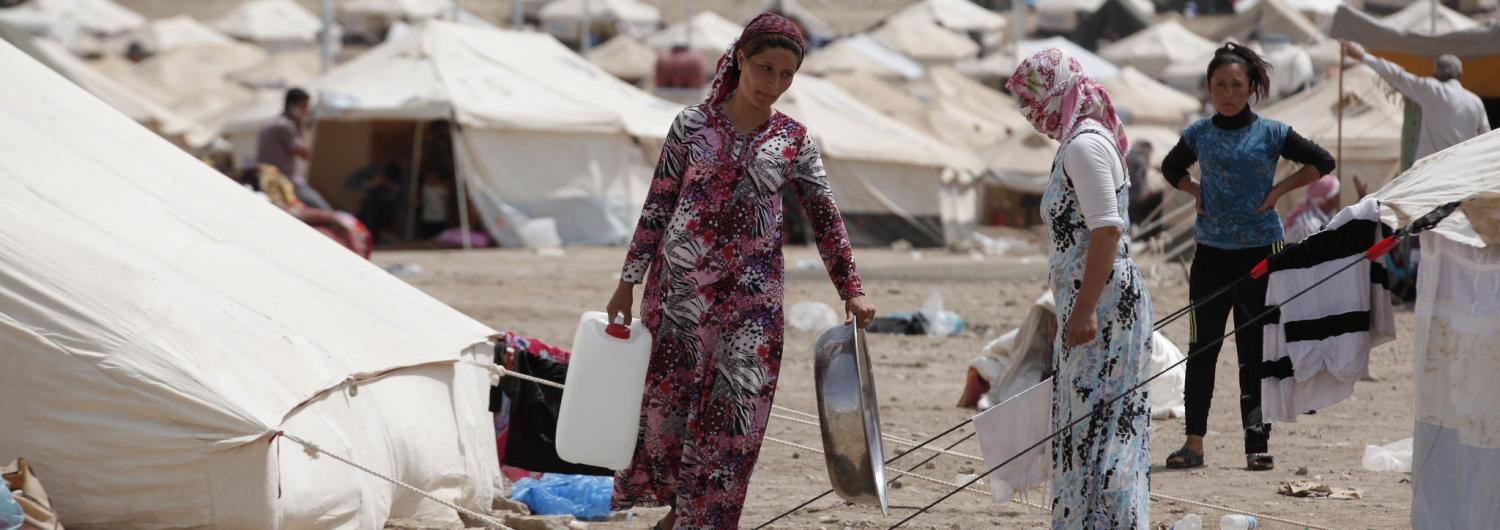The six-year civil war in Syria is the biggest humanitarian crisis of our time. It's caused up to 500,000 deaths, led to the biggest refugee crisis in a generation, and shocked the world with indiscriminate chemical weapons attacks and the use of sexual and gender-based violence as a tactic of warfare.
This crisis calls for a well-tailored, purposeful and gender-aware response from the international community.
Australia is among those pursuing a resolution to this conflict. At the same time, Australia has also strongly advocated for the UN’s Women, Peace and Security (WPS) agenda.
We could and should join the dots on these two policy agendas with four clear areas to action.
Firstly, we need to ask some hard questions of ourselves and our allies when it comes to military action. Australia was among the first 10 countries to join the US-led Global Coalition to Counter ISIS and has engaged in airstrikes in Iraq and Syria since October 2014. Operation OKRA, which includes the Air Task Group, is the Australian Defence Force’s largest international effort, with 780 personnel deployed to the Middle East.
In recent months, Australia's lack of transparency when it comes to tracking the impact of strikes on civilians has come under scrutiny.
In March this year, Warcrimes, an independent NGO set up to hold nations accountable for civilian deaths from air strikes, suggested Australia was one of the least transparent coalition members when it came to disclosing information regarding the date, location and targets of air strikes. Earlier this month, the ADF announced changes to its reporting procedures and will now release fortnightly reports covering its operations in Iraq and Syria.
Australia’s National Action Plan on Women, Peace and Security, 2012-2018 (NAP) resolves to 'integrate a gender perspective into Australia’s policies on peace and security'. More is required to meet the requirements of a gender-aware approach to our operations in Syria, including analysis of anticipated impact of military strikes upon women and girls, consideration of how women and girls will continue to be protected in the aftermath of those strikes and any potential retaliation, and a clear explanation of how the use of force will facilitate the resolution of conflict.
Secondly, the NAP requires Australia to 'increase women’s participation in conflict prevention, peace-building, conflict resolution and relief and recovery'.
Emerging research suggests that if women are not involved in formal peace processes, sustainable peace is elusive. It also appears an agreement is more likely to be reached if women are involved in peace processes. Syrian women have been actively engaged in the fight for freedom, democracy and human rights. However, they have been marginalised in the formal peace process.
Australia needs to use its voice to facilitate women’s participation in the peace talks, helping to emphasise the positive links between the presence of women and political stability. We need to think about Syrian women not only as victims of violence but also as significant partners in the quest to bring about a resolution to conflict and relief to its victims.
Thirdly, the NAP requires Australia to 'promote women, peace and security implementation' internationally. This means keeping the pressure on the UN Security Council, and our allies, to ensure the UN's WPS agenda is integrated into an internationally facilitated approach to conflict resolution.
The Syrian conflict was the most significant crisis Australia faced during its term at the Security Council and ever since. Australia made important efforts in seeking a solution to the ongoing conflict, despite opposition from some of the Council’s members. When Australia joined the Security Council in January 2013, Russia and China had already vetoed three earlier draft resolutions on Syria. Together with Luxemburg, Australia maneuvered a strategy to develop a consensus between the Council’s members.
Now this pressure needs to be maintained – especially in light of the US President’s willingness to bypass the difficulties associated with working with the Council. Australia must use its middle-power status, and the kudos it has earned on the Council, to continue to advocate for a negotiated solution that mainstreams WPS considerations.
Finally, the horrific accounts of violence against women in Syria have been well-documented by the UN. Australia should engage more effectively in the protection of women and girls (and men and boys) who might be subjected to sexual and gender-based violence, including human trafficking and sexual slavery. This means ensuring that aid money spent has a clear and measured impact.
It is time for the Australian Government to connect the dots between the women, peace and security agenda and its actions, policies and influence elsewhere.
